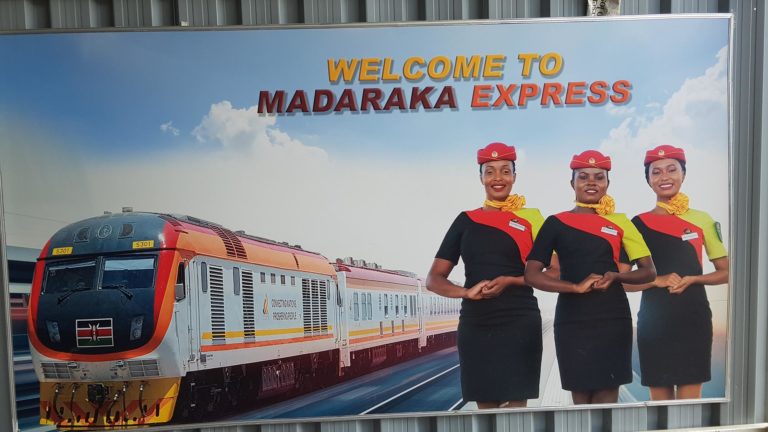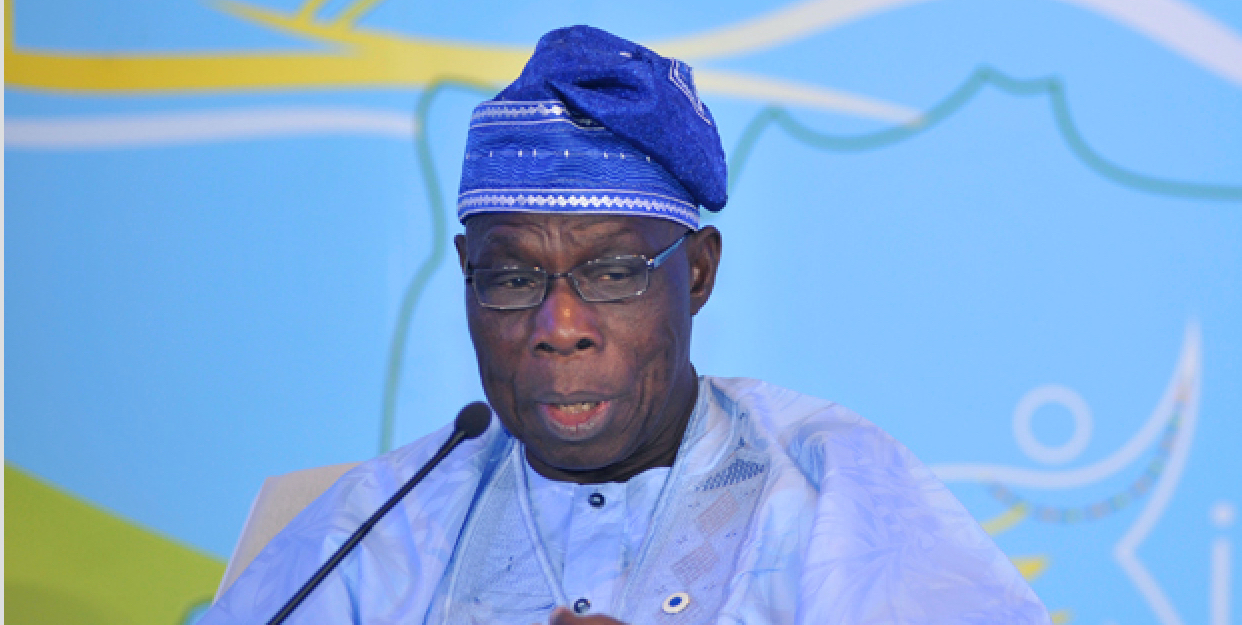News
Kenya Makes A Big, Risky Bet On A Railway Project
Whether it becomes known as a reckless financial exercise or the bold stroke of leadership genius that unlocked infrastructure bottlenecks and spurred not only Kenyan but regional growth, will depend on the extent to which the project is matched by policy to attract business.

Director, The Brenthurst Foundation

Former Researcher, The Brenthurst Foundation

However tempting high-speed trains might be as a means to accelerate development, transport is not enough by itself to catalyse growth and jobs. What matters most is how transport, high-speed or slow, is integrated with other infrastructure and wider policy, as Kenya illustrates.
Hassan Ali Joho was first elected governor of Mombasa in 2013. By 2019, aged just 43, he was halfway through his second and final term.
His city, which comprises the smallest of Kenya’s 47 counties by land mass, is the second wealthiest after Nairobi. It contains, he says proudly, the second-highest levels of skills among its 1.5-million inhabitants, also just behind the capital. It is also the point of access for 200-million Kenyans, Ugandans, Rwandese and Congolese in the hinterland.
He might have added that it is also the beneficiary of the largest infrastructure project undertaken in Kenya since independence, the 485km Standard Gauge Railway (SGR) that shortens the journey time to Nairobi to just five hours. The Madaraka Express passenger service is clean, tidy, runs on time and there are apparently enough security and other checks (nine in total to board the train) for it to be considered safe.
The SGR is a masterpiece of engineering, built by the Chinese contractor 18 months ahead of schedule in just three years, sweeping across 98 bridges and through nine passenger stations, each one built according to a wacky theme: Mombasa’s terminus representing ripples in the ocean, Miasenyi the stripes of a zebra, Emali the closed fist of unity, and so on.
In theory, the upgrading of the railway seemed a good idea. The narrow (Cape) gauge colonial-era Rift Valley Railway, known as the Lunatic Express, had deteriorated as a result of a complete absence of post-independence funding and thus maintenance, and an ill-conceived privatisation process. Annual rail freight from Mombasa port had fallen from 4.8-million to 1.5million tonnes as RVR’s shareholders fought with the elements, the failing century-old inheritance and each other.
Constraints at the port of Mombasa had also not helped, driving up the transport component to around one-third of the cost of goods, compared to 4% in the most efficient trade corridors. Bring these down by reducing congestion on the road, the thinking went, and the economy could take off, leveraging Mombasa’s position as the gateway to markets in east and central Africa.
In practice, however, there have been problems with this new infrastructure.
Foremost has been the shattering short-term effect of the SGR on business in Mombasa itself. Governor Joho says the SGR has in this regard brought “disruption” to the economy, and not all of it good for his constituents.
The SGR model hinges less on the four passenger trains a day than the 30 carrying freight. This required not only doubling Mombasa’s annual throughput from the 2012 figure to 32-million tonnes, but increasing the percentage of rail freight to 50% of the total.
With the opening of a new berth in 2013, also built by China, adding another 200,000 containers to its capacity, Mombasa looks set to achieve record traffic flows in 2019, of around 30-million tonnes.
But getting them on to rail and off the road has involved heavy government intervention, mixing incentives on price with punitive measures. In March 2018, just three months after the commencement of freight services, the government forced, without any legal structure to do so, all container traffic off the roads and on to rail, until December that year, encouraged by a discounted tariff.
SGR carried more than five million tonnes of freight and nearly 1.7-million passengers in 2018.
The blanket ban on trucks has taken away nearly all the transport business from the Container Freight Services (CFS) depots that were set up in Mombasa in 2005 to reduce port congestion by allowing containers to move to holding facilities outside the port where they were cleared by customs prior to forwarding up the road to Nairobi.
Taking strain and lacking alternatives, business in Mombasa is angry, preferring to view the SGR through the prism of corruption, a deliberate slight by Nairobi against those on the coast, a divide which has political echoes. The governor believes there must “be balance. The trucks have to step in, be allowed back into the game”.
This relates to a second challenge with SGR, which is to use the railway option to drive competitiveness rather than simply divert traffic from one system to another. Kenya must provide greater efficiencies for its burgeoning population, expected to increase from 50-million to 80-million by 2045, when the majority will be living in urban areas, with nearly 10%, at current rates of growth, in sprawling slums.
Yet, until now the government has been unable to link logistics with fresh employment initiatives.
Joho believes Mombasa can cement its place as the second-most important port in sub-Saharan Africa after Durban, with a rich vein of opportunities in the oil and gas sector, tourism, and the blue economy.
“To play to our strengths, as a gateway,” says the governor, “we must reflect back on the origins of the port of Mombasa: for export and value addition. Today it is mostly about imports.”
To transform it once more into a source of economic growth and jobs, “we need,” he adds, “national policy alignment, to ensure that the Export Processing Zones work, that the Industrial Development Zones are integrated. This demands free trade regimes, and a taxation regime that is attractive.”
The absence of industry to soak up these numbers of unemployed can be seen in the import versus export figures. While some 1,600 containers arrive in Mombasa each day (of which 400 are in transit for the region outside Kenya), exports account for just 100.
It also requires better roads and traffic management.
Mombasa’s road and traffic system is infamously rubbish, trucks and cars weaving through potholed and dusty roads to avoid swarms of tuk-tuks, boda-bodas motorbikes, and suicidal matatu taxis. Two years after the completion of the SGR, Mombasa’s main arterial roads were still being overhauled with the construction of the 10km Mombasa-Jomvu link awarded to Third China Engineering Company. Why this $65-million, African Development Bank-funded project was a lesser priority than the SGR is hard to fathom.
Veteran opposition leader Raila Odinga served as prime minister between 2008 and 2013. He explains that the SGR was a flagship project of the coalition government he served, along with Lamu’s Lapsset port, Vision 2030 and the Konza “ICT city” among other schemes. The Madaraka Express was conceptualised as part of an East African Railway Masterplan ultimately connecting Kenya to Ethiopia, Uganda, Rwanda, Tanzania, South Sudan and the Democratic Republic of Congo.

Odinga has been concerned, however, as are many watching the Kenyan government’s debt position, about the cost of the project.
“Once we decided to go it alone on the Nairobi to Mombasa stretch, without the Ugandans, we conducted a feasibility study to the consultants’ design,” he says, “and awarded the contract at $2.7-billion just before we left [the government]. The contract was then cancelled by the new government, re-advertised, and then awarded to the same contractors for $3.5-billion, which has ended up being $4.2-billion.”
He notes that Ethiopia built a similar length if higher specification railway at much less cost, as has Tanzania.
“This has led to higher rates on the line to repay the loans,” he notes.
The Kenya line was one-third more expensive than the Ethiopian government paid the Chinese for a 50% longer electric (rather than the less-expensive capital outlay diesel option) railway from Djibouti to Addis Ababa. Since Kenya’s SGR was a government-to-government loan deal, funded 90% by the Chinese government, it could be wrapped with project financing and a constructor and delivered quickly with no public tender and little scrutiny.
According to the International Monetary Fund, Kenya’s total public debt accounted for 63.2% of its gross domestic product in 2018. Of this, Kenya owes China $10-billion, or 20% of its total public debt, the third-highest amount in Africa after Angola ($20-billion) and Ethiopia ($13-billion).
$4.2-billion is a lot of money for a railway that does not possess a viable revenue model. It was a big bet on a single project, when raising the debt levels as this did could have funded many others, from Mombasa’s roads to upgrading the existing line at a fraction of the cost.
In 1903, Britain’s colonial administrator, Sir Charles Norton Edgecumbe Eliot, boldly stated of the railway that “It is not uncommon for a country to create a railway, but it is uncommon for a railway to create a country.”
Whether the SGR becomes known as a reckless financial exercise or the bold stroke of leadership genius that unlocked infrastructure bottlenecks and spurred not only Kenyan but regional growth, will depend on the extent to which the SGR is matched by policy to attract business.
As Odinga puts it, “As we have learnt from East Asia, to attract investors, you need to put in place attractive conditions, more attractive than in their home countries.”
Dr Mills and Van der Merwe are co-authors of a forthcoming Brenthurst Foundation study on Asia’s lessons for Africa.
This article was originally published on The Daily Maverick.

